Parking Access and Revenue Control Systems (PARCS)











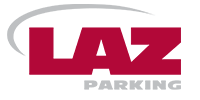


What does PARCS stand for in parking?
PARCS stands for Parking Access and Revenue Control Systems. These systems are fundamental components of parking management, overseeing access, payment, and revenue collection within parking facilities. They encompass a range of real-time computerized solutions tailored to serve both transient and credentialed customers. Utilizing a combination of parking hardware equipment and advanced parking software, PARCS solutions offer varying levels of functionality and complexity to meet the specific requirements of parking owners and operators. From controlling access to facilitating payment and revenue collection, PARCS plays a vital role in optimizing the efficiency and effectiveness of parking operations.
What is PARCS equipment?
All the equipment needed for a PARCS system to function properly. Not all are essential, but they contribute to a smooth parking ecosystem.
Automated Pay Station (APS)
The Automated Pay Station (APS) is a crucial component of parking facilities, enabling streamlined ticket processing and payment handling. Functioning within central cashiering facilities, the APS serves to automate the payment process, reducing the reliance on manual cashiers. Often referred to as “pay on foot” or “pay in lane” machines, these stations accept various forms of payment and issue receipts for transactions.
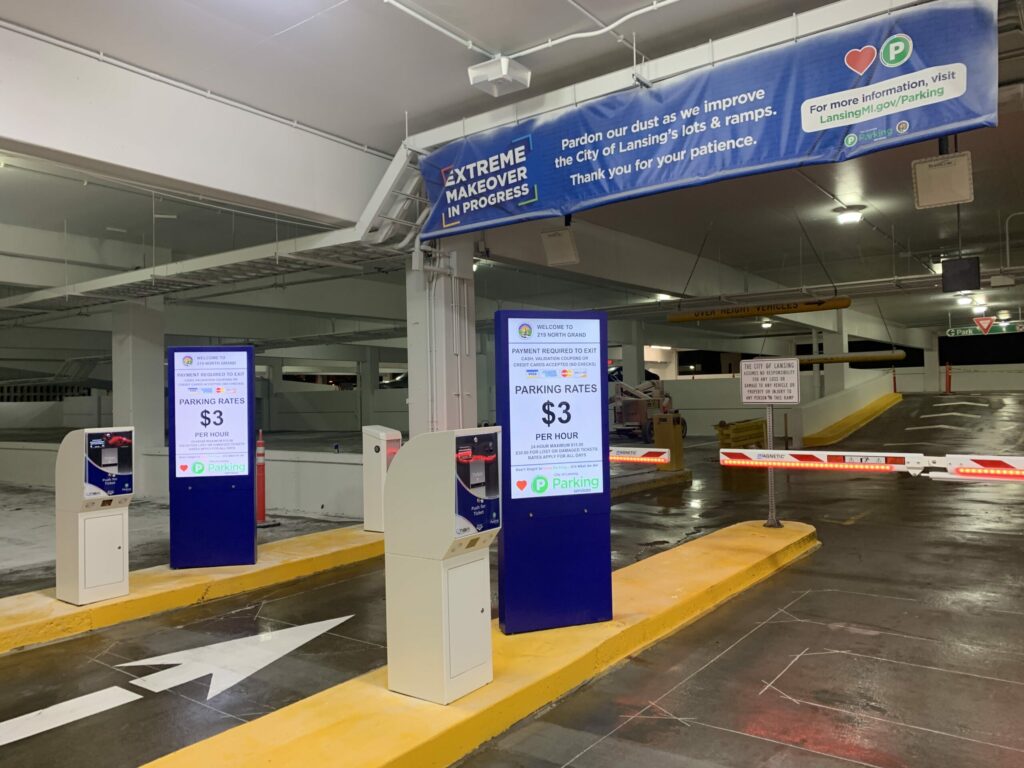
Pay on Foot (POF)
Parkers make payments at designated pay stations located within the parking facility, typically before returning to their vehicles. This method offers convenience and flexibility for parkers to settle their fees before exiting the facility.
Pay in Line (PIL)
Alternatively, pay stations located at the exit lanes allow parkers to make payments as they exit the parking facility. This approach streamlines the exit process, reducing congestion and enhancing overall operational efficiency.
Pay Online
Now, it’s also possible to pay for parking directly online through a mobile application or website. The system will detect the vehicle’s license plate, thanks to LPR Technology, and link it with the payment made on the digital platform.
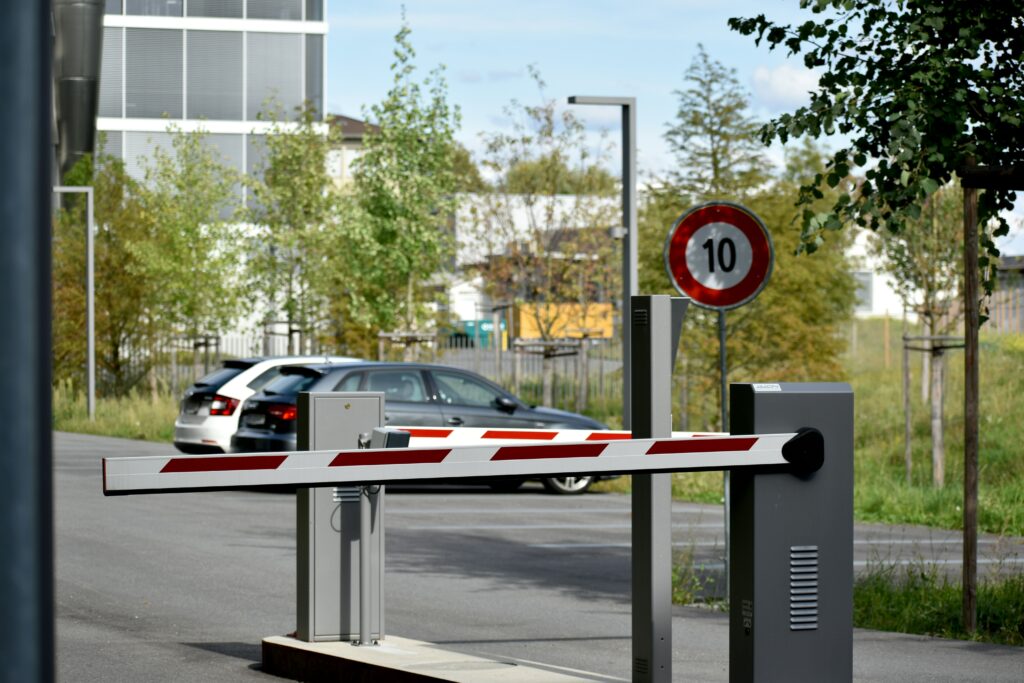
Barrier Gate
A parking facility typically features barrier gates at both the entrance and exit points, enhancing security and enabling the parking management to control access based on a fee structure. These barrier gates are commonly integrated with payment stations, which trigger the opening or closing of the gate depending on the visitor’s payment status.
Barrier gates serve as physical barriers, regulating the flow of vehicles in and out of the parking facility. They play a crucial role in ensuring that only authorized vehicles gain entry and exit, thereby enhancing security and preventing unauthorized use of the parking space.
Connected to the payment stations, the barrier gate system operates seamlessly to facilitate a smooth parking experience for visitors. Upon payment, the barrier gate automatically opens to allow entry or exit, providing a convenient and efficient solution for both parking operators and users alike.
Automatic Vehicle Identification
Automatic Vehicle Identification systems employ various technologies to accurately identify vehicles entering or exiting a parking facility without the need for manual intervention.
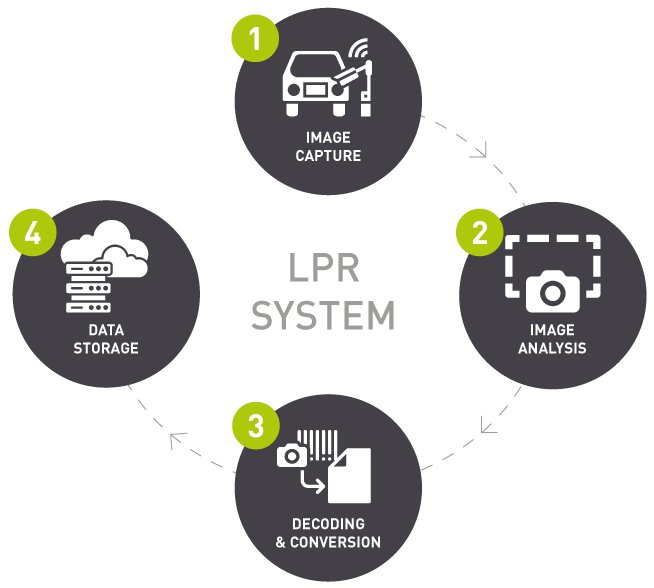
License Plate Recognition (LPR)
LPR technology utilizes cameras equipped with optical character recognition (OCR) software to capture and read license plate numbers of vehicles entering or exiting the parking facility. The captured data is then processed and compared against a database to authenticate the vehicle’s authorization status, allowing seamless access control and payment processing.
Radio-Frequency Identification (RFID)
RFID technology employs radio-frequency signals to wirelessly transmit unique identification data stored on RFID tags attached to vehicles. As a vehicle approaches the entry or exit point, RFID readers installed in the vicinity detect the RFID tags and extract the encoded information, enabling swift and automated identification of authorized vehicles without the need for physical interaction.
License Plate Inventory
(LPI)
License Plate Inventory (LPI) systems maintain a comprehensive database of license plate numbers associated with authorized vehicles permitted to access the parking facility. When a vehicle approaches the entry or exit point, the LPI system compares the captured license plate number against the database to verify the vehicle’s authorization status, facilitating efficient access control and monitoring of vehicle movements within the facility.
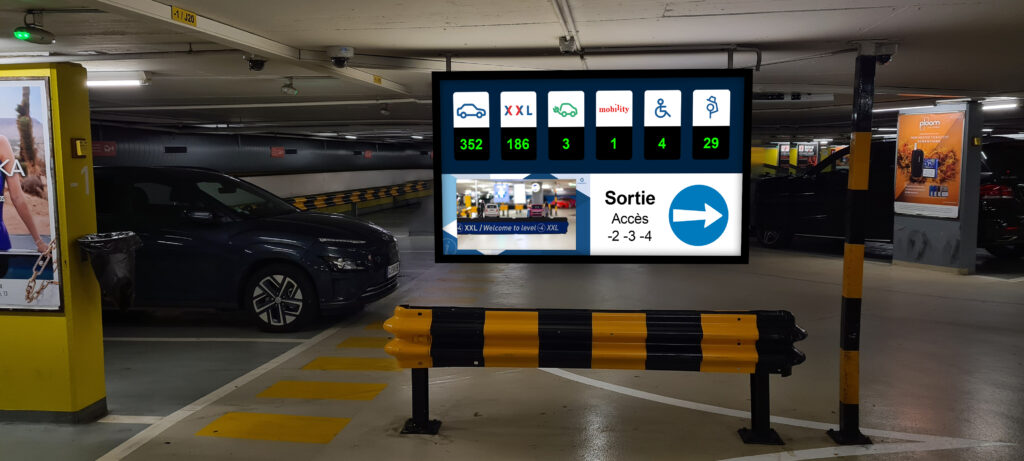
Counting System
Counting systems are integral components of parking facilities designed to monitor and manage vehicle occupancy levels in real-time. These systems utilize advanced technologies such as License Plate Recognition (LPR) cameras and sensor-based solutions to accurately track the number of vehicles present within the parking facility.
LPR cameras are capable of counting the number of vehicles entering and exiting the parking area. Through dynamic displays installed at strategic locations within the parking facility, such as entry gates, this information can be relayed to visitors in real-time.
In addition to LPR cameras, other sensor-based systems are available to detect parked vehicles within individual parking spaces. These sensors, often integrated into the parking surface or mounted on overhead structures, utilize various technologies to detect the presence of vehicles.
These sensor-based systems can display the occupancy status of individual parking spaces using LED indicators, typically displaying green for available spaces and red for occupied spaces. By providing clear visual cues, these systems enable visitors to easily identify available parking spots, enhancing convenience and efficiency. Furthermore, the data collected by these sensors can be utilized to calculate the total number of parking spaces available and unavailable, enabling parking operators to optimize parking capacity and improve overall facility management.
Wayfinding and Parking Guidance
Wayfinding and parking guidance systems are invaluable tools for directing visitors to available parking spaces within a parking facility. These systems utilize a combination of technologies and signage to facilitate efficient navigation and optimize traffic flow.
By integrating with the counting system, wayfinding and parking guidance systems can dynamically display information about available parking spaces to visitors. This information is typically relayed through dynamic LCD displays or LED screens strategically positioned at key locations throughout the parking facility.
Wayfinding and parking guidance systems can be deployed both indoors and outdoors, enhancing visibility and attracting visitors to utilize the parking facility. Outdoor signage can include large LED displays or directional signs placed along roadways to guide drivers to the entrance of the parking facility. Once inside, indoor displays provide real-time information on available parking spaces and guide visitors to the nearest vacant spots.
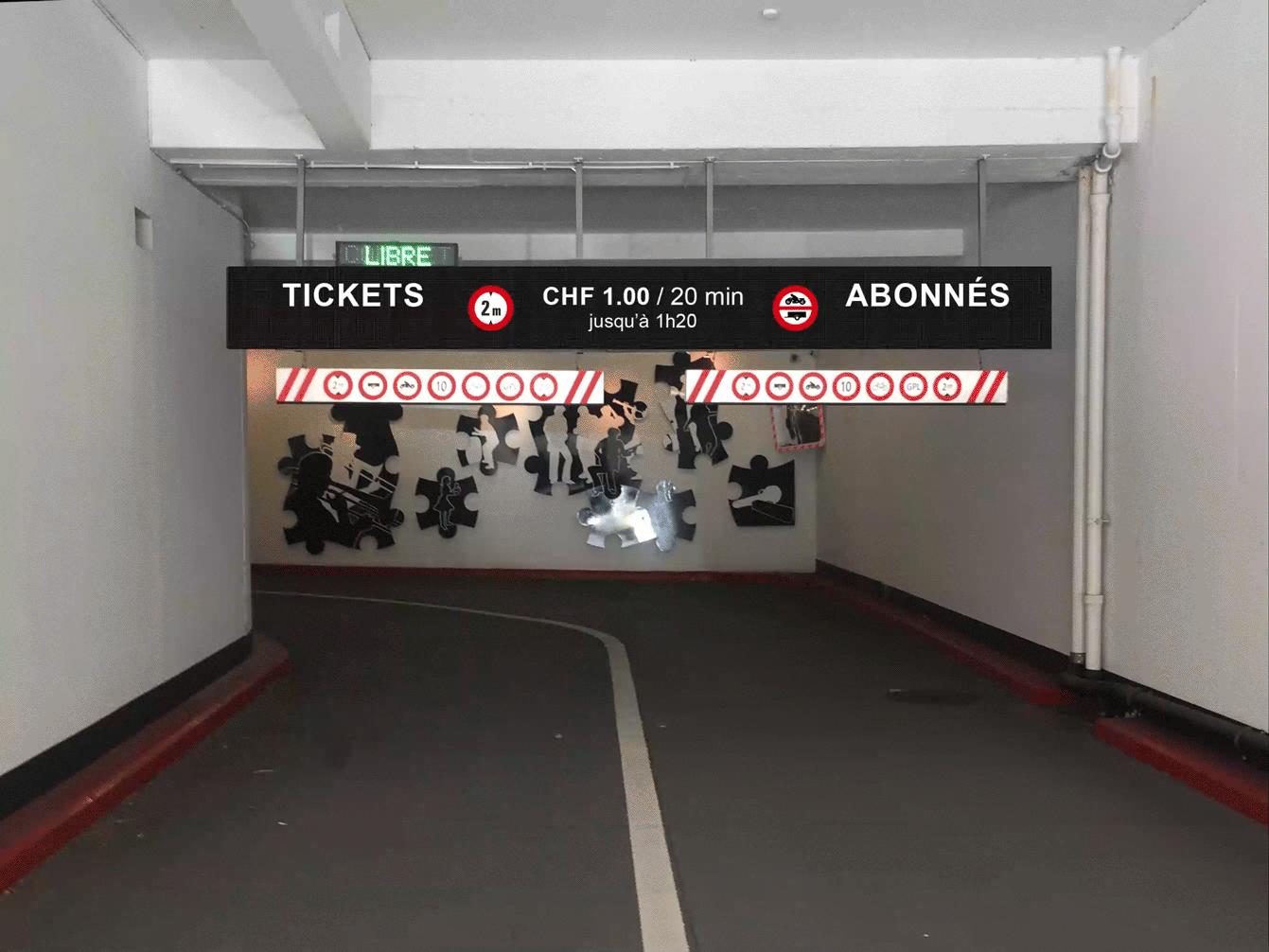
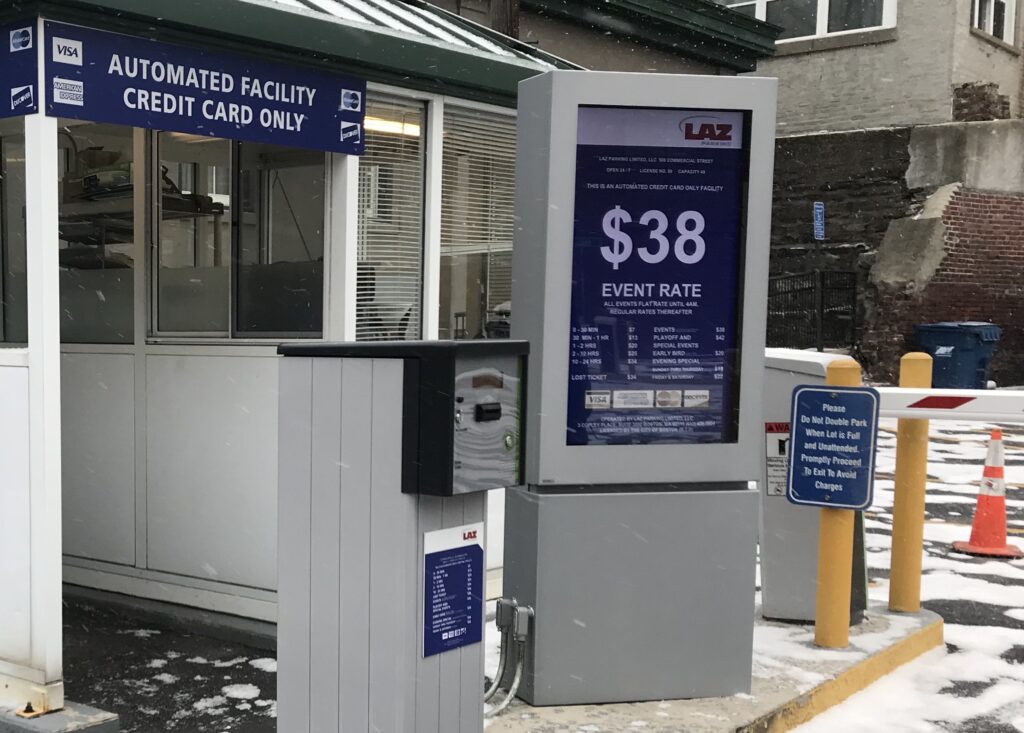
Digital Signage
Digital signage is a powerful tool when integrated with your Parking Access Control Revenue System (PARCS). It enhances the display of various systems and makes your parking facility more attractive.
For instance, you can directly link your pay station to your dynamic display screen. Whenever you update the pricing on your pay station, the price on your dynamic display screen automatically updates accordingly.
Similarly, with guidance systems, you can display the number of available parking spaces directly on a dynamic display screen, guiding your visitors through the parking facility. This seamless integration not only improves the visitor experience but also increases the efficiency of your parking operations.
System TV solutions can integrate with various parking solutions:
How Much Does the Parking Access and Control Systems Cost?
The cost of implementing a parking access and control systems varies depending on the installations you wish to deploy within your parking facility. While the initial investment may be significant, it is worthwhile considering the potential benefits it brings in enhancing the overall parking experience and attracting more visitors compared to a conventional parking setup.
For instance, when considering digital signage, several factors contribute to the overall cost. These may include the size and quantity of screens, the complexity of the integration with other systems, and ongoing maintenance and support expenses. Discover our article about digital signage prices.
What is the Entry and Exit Control System in a Parking Lot?
The entry and exit control system in a parking lot is designed to regulate vehicle flow and control access to the facility. It typically consists of barrier gates positioned at entry and exit points to prevent unauthorized entry and ensure orderly traffic movement. Additionally, payment terminals, also known as pay stations, are installed within the parking lot for visitors to pay for parking before exiting. These terminals offer various payment options, including cash, credit/debit cards, and contactless methods.
What is The Main Purpose of Access Entry Control to a Parking Facility?
The main purpose of access entry control to a parking facility encompasses several key objectives aimed at optimizing the management and operation of the parking space
Control Access to the Parking Facility
Access entry control systems are implemented to regulate and manage the flow of vehicles entering the parking facility. By enforcing controlled access, parking operators can ensure that only authorized vehicles, such as paying customers or permitted personnel, gain entry, thereby enhancing security and preventing unauthorized use of the parking space.
Monetize the Parking Lot Year-Round
Access entry control systems play a crucial role in monetizing the parking facility by implementing payment mechanisms for parking services. By requiring payment for access, parking operators can generate revenue streams and offset the costs associated with parking facility maintenance, management, and enhancements.
Improve Accessibility and Traffic Flow
Effective access entry control systems are designed to improve the accessibility and traffic flow within the parking facility. By strategically managing entry points and implementing features such as guidance systems and digital signage, parking operators can optimize the flow of vehicles, minimize congestion, and enhance overall traffic efficiency.
24 years of existence
Over 5000 screens installed worldwide
Serving 2000 users
Discover Our Latest Articles
- Technology
What Is a Parking Management System?
Ready to Deliver Useful and Entertaining Information?
Find out how we’ll guide you through digital signage with our experts!



